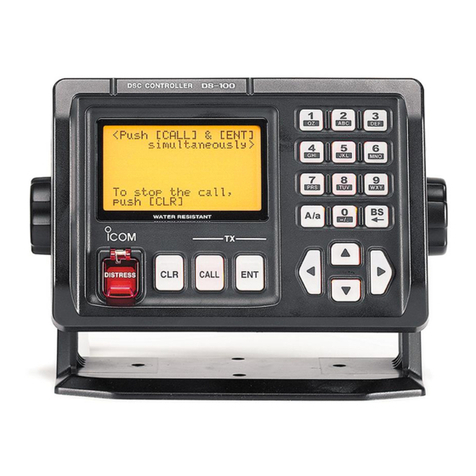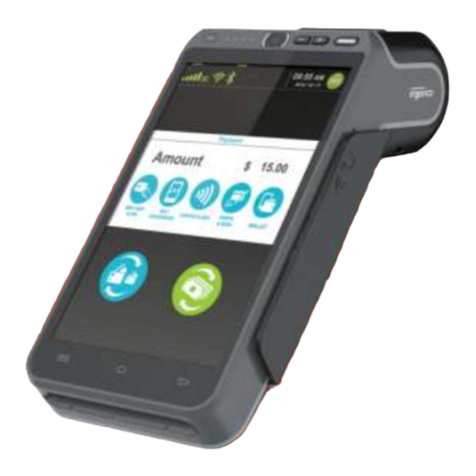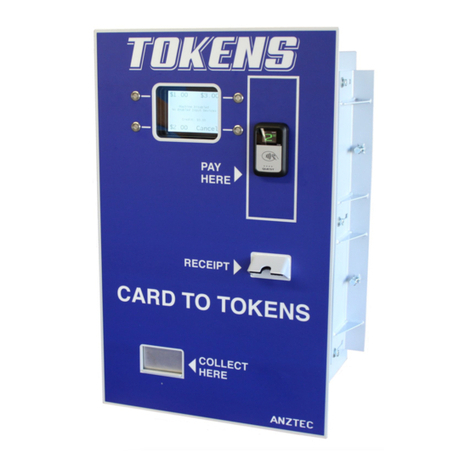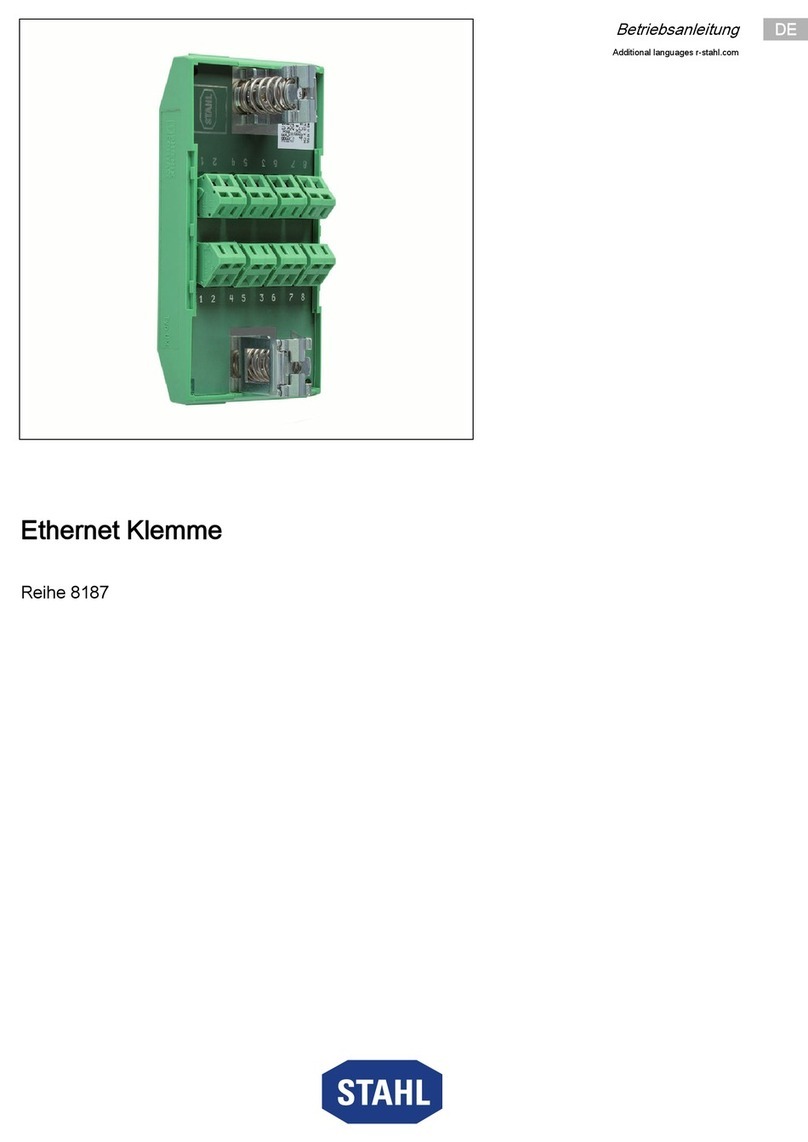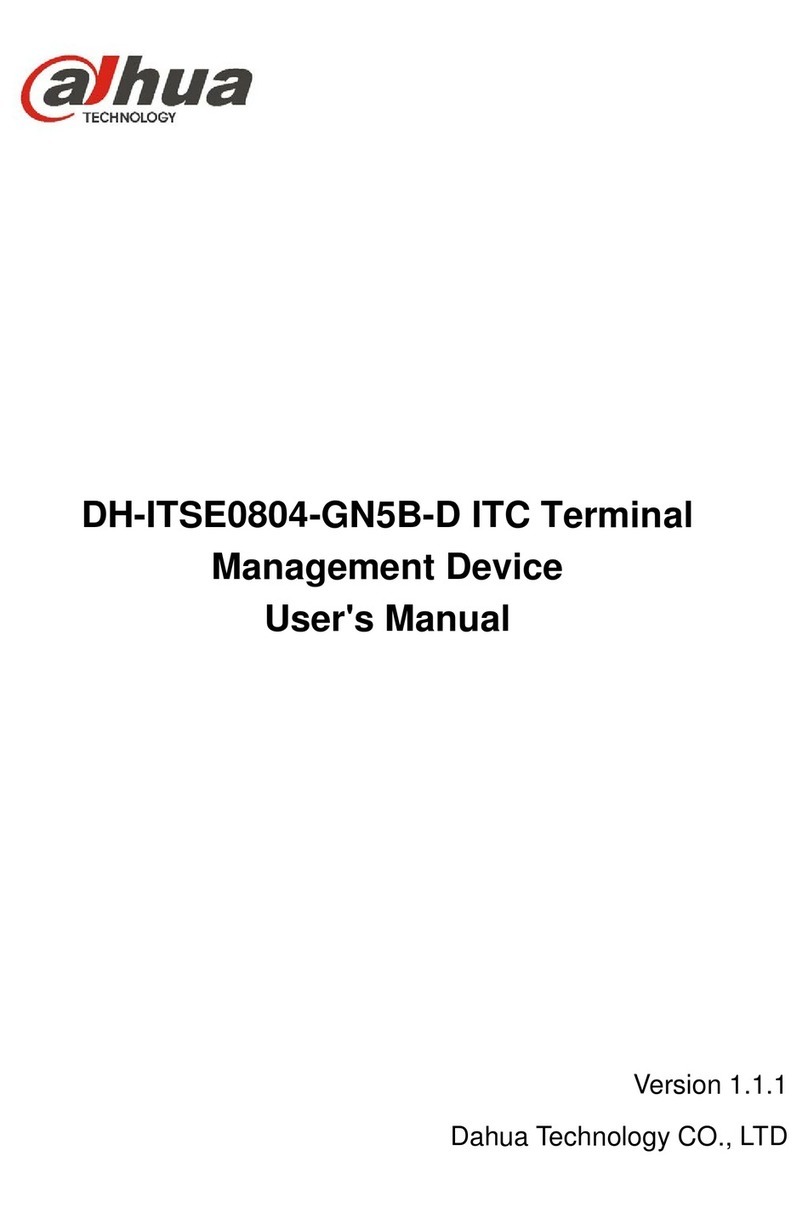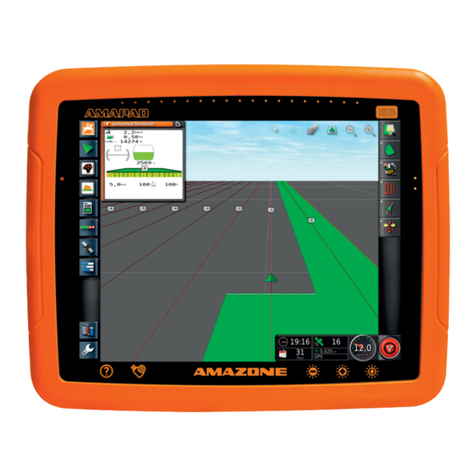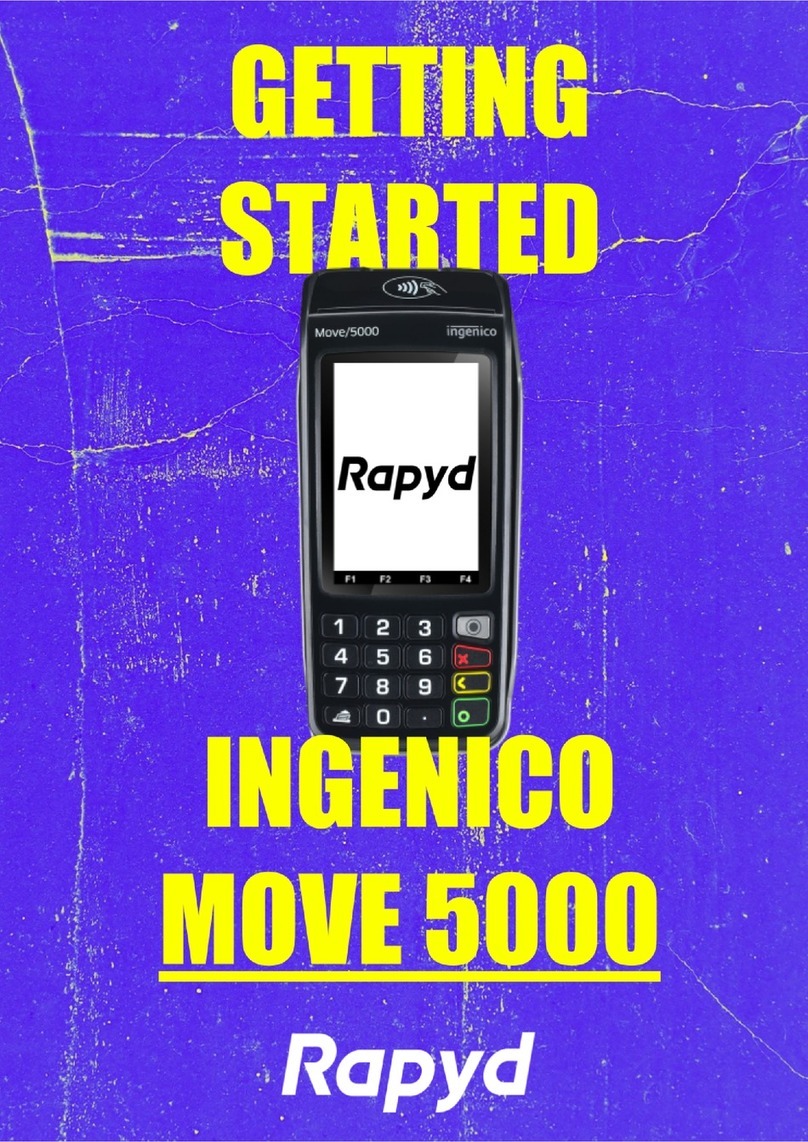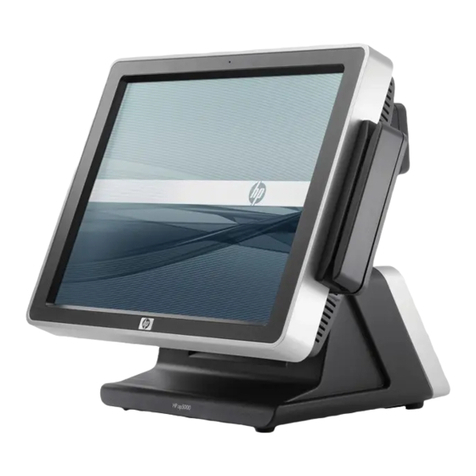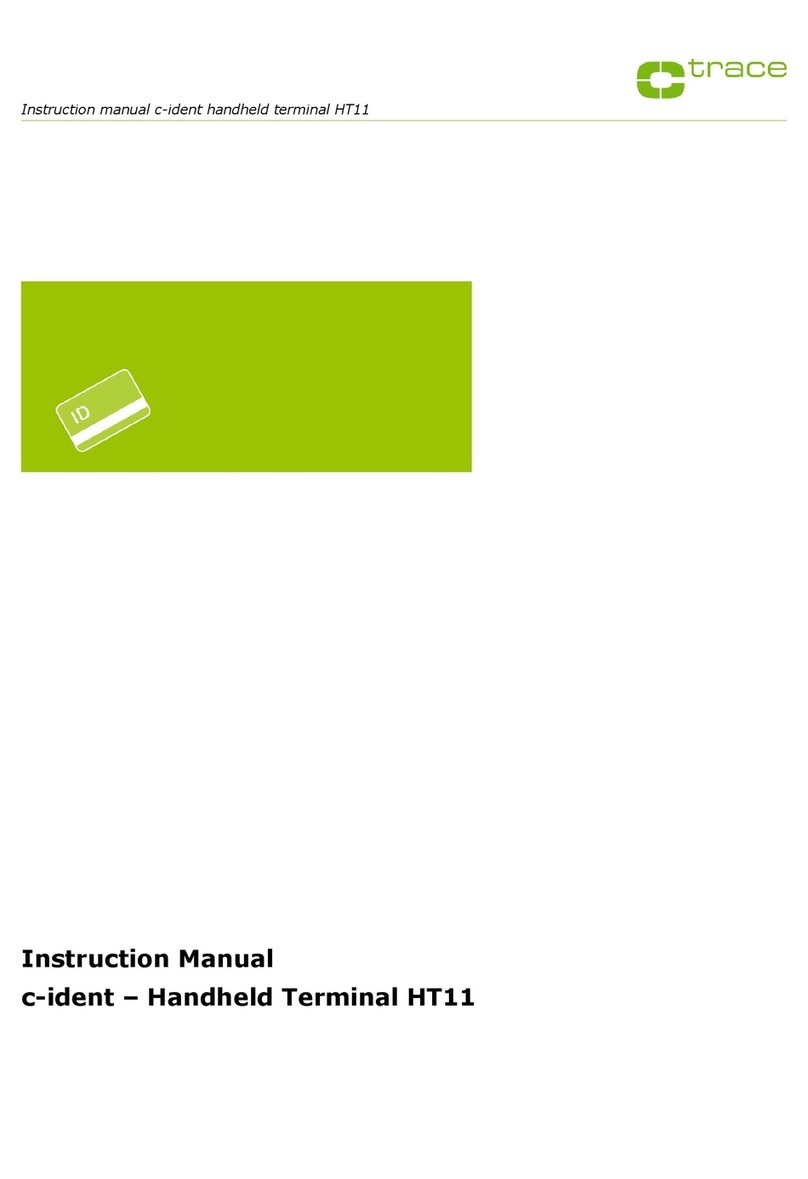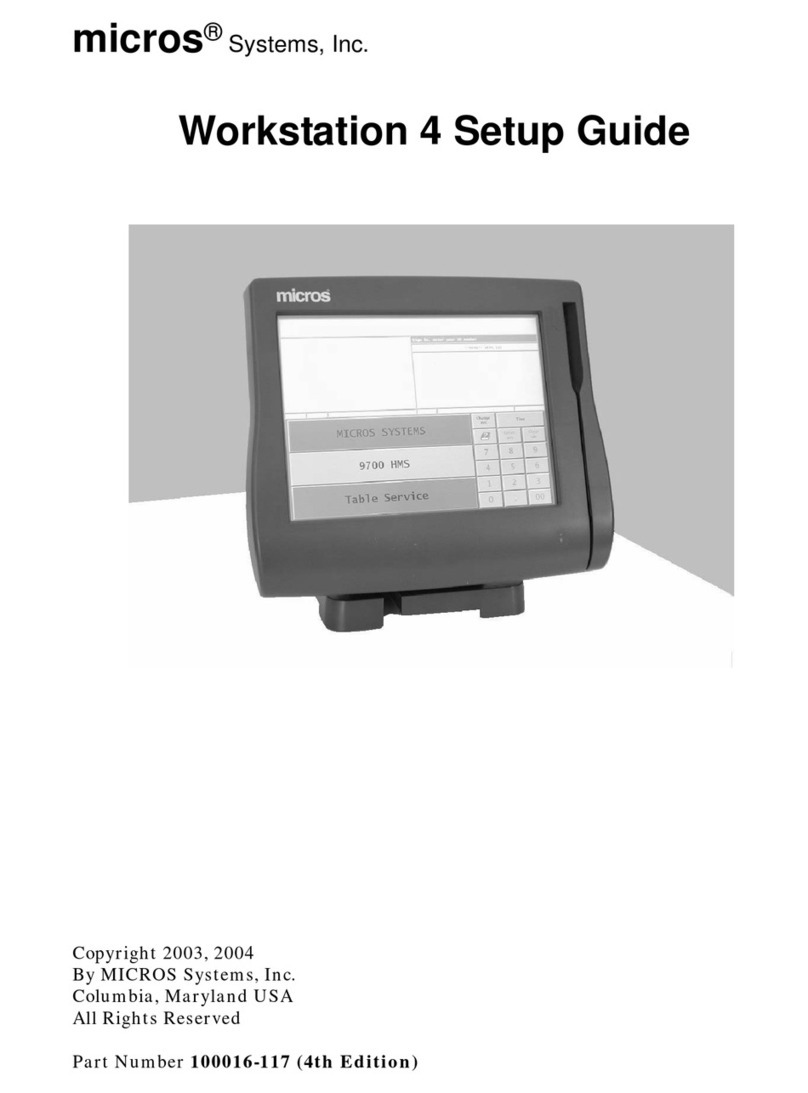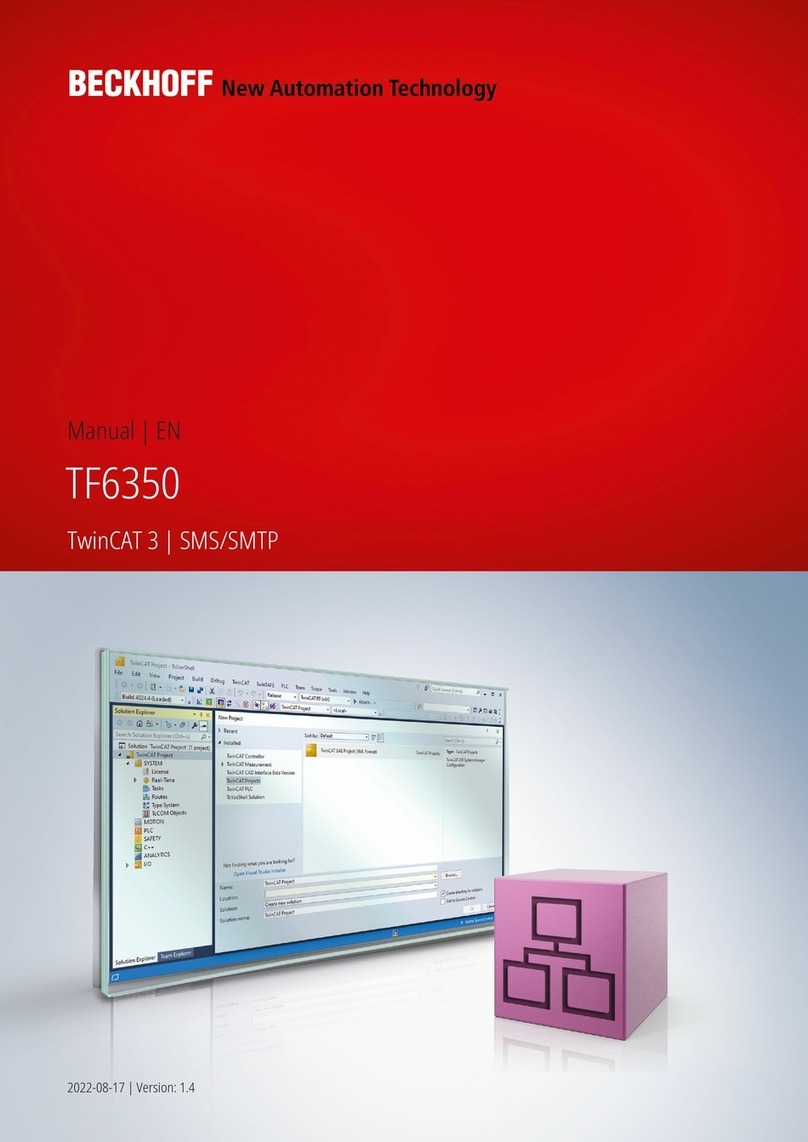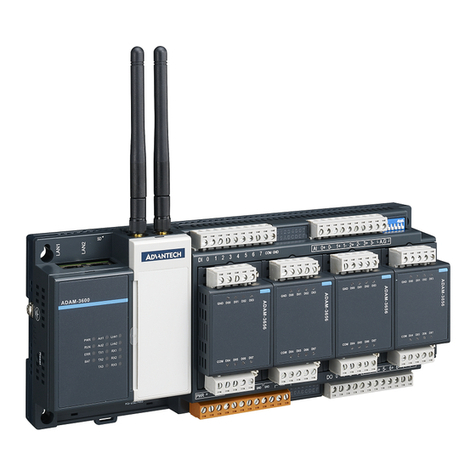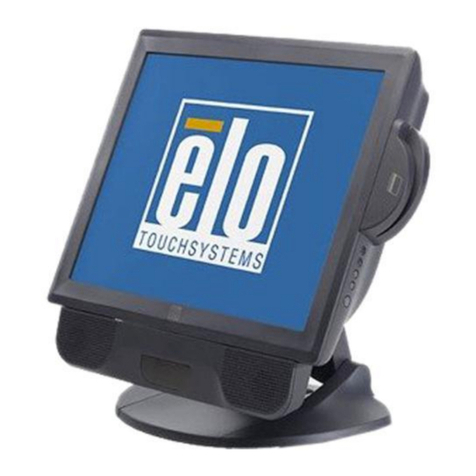Icom IP100H User manual

EXPLICIT DEFINITIONS
WORD DEFINITION
RDANGER!
Personal death, serious injury or an explosion may occur.
RWARNING!
Personal injury, fire hazard or electric shock may occur.
CAUTION Equipment damage may occur.
NOTE If disregarded, inconvenience only. No risk of
personal injury, fire or electric shock.
SUPPLIED ACCESSORIES
Battery pack
Antenna
connector cap Antenna*Belt clip
Hand strap
*A different type may be supplied,
depending on the communication
terminal version.
PRECAUTIONS
RDANGER! NEVER short the terminals of the battery pack.
Shorting may occur if the terminals touch metal objects such
as a key, so be careful when placing the battery packs (or the
communication terminal) in bags, and so on. Carry them so that
shorting cannot occur with metal objects. Shorting may damage
not only the battery pack, but also the communication terminal.
RDANGER! Use and charge only specified Icom battery
packs with Icom communication terminals or Icom chargers. Only
Icom battery packs are tested and approved for use with Icom
communication terminals or charged with Icom chargers. Using
third-party or counterfeit battery packs or chargers may cause
smoke, fire, or cause the battery to burst.
RDANGER! NEVER operate the communication terminal near
unshielded electrical blasting caps or in an explosive atmosphere.
This could cause an explosion and death.
RWARNING RF EXPOSURE! This device emits Radio
Frequency (RF) energy. Caution should be observed when
operating this device. If you have any questions regarding RF
exposure and safety standards, please refer to the Federal
Communications Commission Office of Engineering and
Technology’s report on Evaluating Compliance with FCC
Guidelines for Human Radio Frequency Electromagnetic Fields
(OET Bulletin 65).
RWARNING! NEVER hold the communication terminal so
that the antenna is very close to, or touching exposed parts of
the body, especially the face or eyes, while transmitting. The
communication terminal will perform best if the microphone is 5 to
10 cm (2 to 4 inches) away from the lips and the communication
terminal is vertical.
RWARNING! NEVER operate the communication terminal
with a headset or other audio accessories at high volume levels.
The continuous high volume operation may cause a ringing in
your ears. If you experience a ringing, reduce the volume level or
discontinue use.
CAUTION: DO NOT use harsh solvents such as Benzine
or alcohol when cleaning, because they will damage the
communication terminal’s surfaces.
1-1-32 Kamiminami, Hirano-ku, Osaka 547-0003, Japan A-7120D-1EX-raPrinted in Japan
© 2014–2017 Icom Inc.
PRECAUTIONS (Continued)
RWARNING! Immediately stop using the battery if it emits an
abnormal odor, heats up, or is discolored or deformed. If any of
these conditions occur, contact your Icom dealer or distributor.
RWARNING! Immediately wash, using clean water, any part of
the body that comes into contact with fluid from inside the battery.
RWARNING! NEVER put the battery in a microwave oven,
high-pressure container, or in an induction heating cooker. This
could cause a fire, overheating, or cause the battery to rupture.
CAUTION: Always use the battery within the specified
temperature range, –10°C to +60°C (+14°F to +140°F). Using
the battery out of its specified temperature range will reduce the
battery’s performance and battery life.
CAUTION: Shorter battery life could occur if the battery is
left fully charged, completely discharged, or in an excessive
temperature environment (above +50°C; +122°F) for an extended
period of time. If the battery must be left unused for a long time,
it must be detached from the terminal after discharging. You may
use the battery until the battery indicator shows half capacity, then
keep it safely in a cool and dry place at the following temperature
range:
–20°C (–4°F) to +50°C (+122°F) (within a month)
–20°C (–4°F) to +35°C (+95°F) (within three months)
–20°C (–4°F) to +20°C (+68°F) (within a year)
BE SURE to replace the battery pack with a new one approximately
five years after manufacturing, even if it still holds a charge.
The inside battery material will become weak after a period of
time, even with little use. The estimated number of times you
can charge the battery is between 300 and 500. Even when the
battery appears to be fully charged, the operating time of the
communication terminal may become short when:
・Approximately five years have passed since the battery was
manufactured.
・The battery has been repeatedly charged.
・Charging caution
RDANGER! NEVER charge the battery pack in areas with
extremely high temperatures, such as near fires or stoves, inside
a sun-heated vehicle, or in direct sunlight. In such environments,
the safety/protection circuit in the battery will activate, causing the
battery to stop charging.
RWARNING! NEVER charge the communication terminal
during a lightning storm. It may result in an electric shock, cause a
fire or damage the communication terminal. Always disconnect the
power adapter before a storm.
RWARNING! DO NOT charge or leave the battery in the
battery charger beyond the specified time for charging. If the
battery is not completely charged by the specified time, stop
charging and remove the battery from the battery charger.
Continuing to charge the battery beyond the specified time limit
may cause a fire, overheating, or the battery may rupture.
RWARNING! NEVER insert the communication terminal
(battery attached to the communication terminal) into the charger
if it is wet or soiled. This could corrode the battery charger
terminals or damage the charger. The charger is not waterproof.
CAUTION: NEVER charge the battery outside of the specified
temperature range:
BC-202: ±0°C to +40°C (+32°F to +104°F)
BC-211: +10°C to +40°C (+50°F to +104°F)
Icom recommends charging the battery at +25°C (+77°F). The
battery may heat up or rupture if charged out of the specified
temperature range. Additionally, battery performance or battery
life may be reduced.
DISPOSAL
The crossed-out wheeled-bin symbol on your
product, literature, or packaging reminds you that in
the European Union, all electrical and electronic
products, batteries, and accumulators (rechargeable
batteries) must be taken to designated collection
locations at the end of their working life. Do not
dispose of these products as unsorted municipal
waste. Dispose of them according to the laws in your area.
IP100H and Bluetooth®Interference
Bluetooth®uses the 2.4 GHz band. When using the IP100H in the
2.4 GHz band near a Bluetooth®device, interference may occur.
This may cause a decrease in communication speed, and an
unstable connection.
In such case, use the IP100H away from the Bluetooth®device
communication area, or stop using the Bluetooth®device.
RECOMMENDATION
CLEAN THE COMMUNICATION TERMINAL THOROUGHLY
WITH FRESH WATER after exposure to saltwater, and dry it before
operating. Otherwise, the communication terminal's keys, switches
and controllers may become unusable, due to salt crystallization,
and/or the charging terminals of the battery pack may rust.
NOTE: If the communication terminal’s waterproof protection ap-
pears defective, carefully clean it with a soft, wet (fresh water)
cloth, then, dry it before operating.
The communication terminal may lose its waterproof protection if
the case, jack cap, or connector cover is cracked or broken, or the
communication terminal has been dropped.
FCC INFORMATION
This device complies with part 15 of the FCC Rules. Operation
is subject to the following two conditions: (1) This device may
not cause harmful interference, and (2) this device must accept
any interference received, including interference that may cause
undesired operation.
Changes or modifications to this device, not expressly approved
by Icom Inc., could void your authority to operate this device under
FCC regulations.
NOTE: This equipment has been tested and found to comply
with the limits for a Class B digital device, pursuant to part
15 of the FCC Rules. These limits are designed to provide
reasonable protection against harmful interference in a residential
installation. This equipment generates, uses and can radiate radio
frequency energy and, if not installed and used in accordance
with the instructions, may cause harmful interference to radio
communications. However, there is no guarantee that interference
will not occur in a particular installation. If this equipment does
cause harmful interference to radio or television reception, which
can be determined by turning the equipment off and on, the user
is encouraged to try to correct the interference by one or more of
the following measures:
• Reorient or relocate the receiving antenna.
• Increase the separation between the equipment and receiver.
• Connect the equipment into an outlet on a circuit different
from that to which the receiver is connected.
•
Consult the dealer or an experienced radio/TV technician for help.
FOR CANADA
This device complies with Industry Canada licence-exempt RSS
standard(s). Operation is subject to the following two conditions:
(1) this device may not cause interference, and (2) this device
must accept any interference, including interference that may
cause undesired operation of the device.
i. the device for operation in the band 5150–5250 MHz is only for
indoor use to reduce the potential for harmful interference to
co-channel mobile satellite systems.
ii. the maximum antenna gain permitted for devices in the bands
5250–5350 MHz and 5470–5725 MHz shall comply with the
e.i.r.p. limit.
SAFETY TRAINING INFORMATION
This device was tested and approved with original accessories to
ensure FCC Compliance. The use of third-party accessories may
not comply with FCC RF exposure compliance requirements, and
should be avoided.
CAUTION: DO NOT operatate the communication terminal
unless the flexible antenna, battery pack, and jack cover are
securely attached. Confirm that the antenna and battery pack are
dry before attaching. Exposing the inside of the communication
terminal to dust or water will result in serious damage to the
communication terminal.
After exposure to water, clean the battery contacts thoroughly with
fresh water and dry them completely to remove any water or salt
residue.
DO NOT use or place the communication terminal in direct
sunlight or in areas with temperatures below –10°C (+14°F) or
above +60°C (+140°F).
DO NOT push [PTT] when you do not actually intend to transmit.
DO NOT modify the communication terminal. The specifications
may change and then the communication terminal may not comply
with the requirements of required regulations. The communication
terminal warranty does not cover any problems caused by
unauthorized modification.
BE CAREFUL! The communication terminal will become hot
when operating it continuously for long periods of time.
BE CAREFUL! The communication terminal meets IPX7*
requirements for waterproof protection. However, once the
communication terminal has been dropped, waterproof protection
cannot be guaranteed because of possible damage to the
communication terminal’s case or waterproof seal.
*Only when the BP-271 or BP-272 (option), flexible antenna or antenna
cap and [ / ] cap are attached.
The optional BP-273 and HM-186LS meet IPX4 requirements
for splash resistance. When it is attached, the communication
terminal corresponds to IPX4.
・Battery caution
Misuse of Li-ion batteries may result in the following hazards:
smoke, fire, or the battery may rupture. Misuse can also cause
damage to the battery or degradation of battery performance.
RDANGER! NEVER strike or otherwise impact the battery. Do
not use the battery if it has been severely impacted or dropped,
or if the battery has been subjected to heavy pressure. Battery
damage may not be visible on the outside of the case. Even if the
surface of the battery does not show cracks or any other damage,
the cells inside the battery may rupture or catch fire.
RDANGER! NEVER leave battery pack in places with
temperatures above +60°C (+140°F). High temperature buildup in
the battery, such as could occur near fires or stoves, inside a sun
heated car, or in direct sunlight may cause the battery to rupture
or catch fire. Excessive temperatures may also degrade battery
performance or shorten battery life.
RDANGER! NEVER expose the battery to rain, snow,
seawater, or any other liquids. Do not charge or use a wet battery.
If the battery gets wet, be sure to wipe it dry before using.
RDANGER! NEVER incinerate a used battery pack since
internal battery gas may cause it to rupture, or may cause an
explosion.
RDANGER! NEVER solder the battery terminals, or NEVER
modify the battery pack. This may cause heat generation, and the
battery may burst, emit smoke or catch fire.
RDANGER! Use the battery only with the communication
terminal for which it is specified. Never use a battery with any
other equipment, or for any purpose that is not specified in this
instruction manual.
RDANGER! If fluid from inside the battery gets in your eyes,
blindness can result. Rinse your eyes with clean water, without
rubbing them, and go to a doctor immediately.
INSTRUCTIONS
IP ADVANCED RADIO SYSTEM
COMMUNICATION TERMINAL
IP100H
Thank you for choosing this Icom product.
READ ALL INSTRUCTIONS carefully and completely
before using this product.

PANEL DESCRIPTIONS
DFront and side panels
[PWR/VOL] knob
Turns the communication terminal
power ON or OFF and adjusts the audio
output level.
Function display
[ / ] jack
(External microphone/speaker jack)
Connect an optional speaker-microphone
or headset for hands-free, full-duplex
operation.
CAUTION: Attach the jack cover
when optional equipment is not used.
Be sure to turn power OFF before
connecting or disconnecting optional
equipment to or from the [ / ] jack.
Function keys
Internal speaker
When an optional speaker-microphone
or headset is connected, the internal
speaker is disabled.
[] (Address) key
Repeatedly push to select an address
book from All, Group, Talkgroup,
Individual or Telephone.
• Selectable address book may differ,
depending on the IP1000C settings.
• Push [J]/[K] to select a desired address.
[ ] (Call History) key
Repeatedly push to select call history
from the TX log, RX log, TX MSG log,
RX MSG log, TX TEL log or RX TEL log.
• Selectable log may differ, depending on the
IP1000C settings.
• Push [J]/[K] to select a desired log.
• Hold down until “Emergency” is displayed
to send an emergency call, depending on
the settings.
[J] (Up)/[K] (Down) keys
Push to select a desired address (ID),
log, message, status or the Area Call
function.
[FUNC] key
• Push to select a Talkgroup, depending
on the settings.
• After a desired address is selected, re-
peatedly push to select a message, sta-
tus, or the Area Call function select sta-
tus.
• Selectable functions may differ, depending
on the IP1000C settings.
• Push [J]/[K] to select a desired message,
status or the function setting.
[CLR• ] (Clear•Lock) key
• Push momentarily to select the
standby screen.
• Hold down for 1 second to turn the Key
lock function ON or OFF.
DFunction keys
Antenna connector
Attach the supplied antenna.
Or, attach the supplied antenna connector
cap, if the internal antenna is used.
CAUTION: NEVER HOLD just the
attached antenna when carrying the
communication terminal.
[Option] key
• Push to hang up a telephone call.
Or, push to select one of the often
used messages or IDs, depending on
the settings.
• Hold down until “Emergency” is dis-
played to send an emergency call de-
pending on the settings.
Internal microphone
When the VOX function is used, the
internal microphone is disabled.
[PTT] switch
In the simplex mode, hold down to
transmit, and release to receive.
In the full-duplex mode, push to make a call.
DFunction display
1/23 12:34
All
1/23 12:34
Back to office ASA
Blinks Scrolls
Standby screen When a message is received
• Signal strength indicator
Displays the signal strength in 3 levels when your
communication terminal is in a service area.
“ ” blinks when you are out of the service area, and “ ” is
displayed if your communication terminal is not registered,
or not connected to the IP1000C.
• Call mode icon
: Displayed when All or Group call is selected.
: Displayed when Individual call is selected.
: Displayed when Telephone call is selected.
: Displayed when Talkgroup call is selected.
• Area Call function icon
Displayed when the Area Call function is ON.
• Pocket beep function icon
Displayed when the Pocket beep function is ON.
• P-Bell function icon
Displayed when the P-Bell function is ON.
• Key lock function icon
Displayed when the Key lock function is ON.
• Battery indicator
Displays the attached battery pack's remaining battery charges.
DUsing the BC-202
The BC-202 rapidly charges a battery pack.
Charging time: Approximately 2 hours for the BP-271
Approximately 3.5 hours for the BP-272
The following item is required.
• A power adapter (A different type, or no power adapter is supplied,
depending on the charger versions).
Desktop charger
BC-202
AC outlet
Charging
indicator
Battery pack
Communication
terminal
+ battery pack
Tapping scre
ws
3.5×30 mm
Turn OFF the power
Power adapter
DUsing the BC-211
The BC-211 rapidly charges up to 6 battery packs.
Charging time: Approximately 2 hours for the BP-271
Approximately 3.5 hours for the BP-272
The following item is required.
• A power adapter (not supplied with some versions).
AC outlet
Power adapter
(BC-157S)
Multi-Charger
BC-211
Charging indicator
(one for each slot)
Battery pack Communication
terminal
+ battery pack
Turn OFF the power
BATTERY CHARGING
CALLING PROCEDURES
1. Push [ ] several times to select a desired address
book.
・Select “All” for all stations call, “Group” for group call,
“Talkgroup” for talkgroup call, “Individual” for individual
station call or “Telephone” for telephone call.
・Selectable address book may differ, according to the
IP1000C's setting.
2. Push [J]/[K] several times to select a desired ID or
extension number.
・Selectable ID or extension number may differ, according to
the IP1000C's setting.
・You can select a desired ID or extension number from call
history by pushing [ ] for easy recalling.
3. If you want to send a message or status, or make an
Area Call, push [FUNC] several times.
・Selectable function may differ, according to the IP1000C's
setting.
・Select “Message” to transmit a message, “Status” to
transmit a status, or “Area Call” for an Area Call.
・When Area Call is selected, push [J]/[K] to select ON.
4. Push [PTT] to make a call.
5. Hold down [PTT], and speak at your normal voice
level.
6. Release [PTT] to listen.
7. Repeat the steps 5 and 6 until you finish your
conversation.
8. To hang up the telephone call, push [Option].
For your information
When the VOX function or full-duplex mode is set in the
IP1000C, the steps 5 and 6 are not necessary.
When the VOX function is set, speak into the headset
microphone to transmit, then stop speaking to listen.
In full-duplex, you can speak and hear the other person at
the same times.
NOTE: Use the optional HM-153LS, HM-166LS, or HS-85
with OPC-2144 for full-duplex operation.
OPTIONS
・BP-271/BP-272 Li-ion battery packs
BP-271: 7.4 V/1150 mAh (minimum), 1200 mAh (typical)
BP-272: 7.4 V/1880 mAh (minimum), 2000 mAh (typical)
・BP-273 battery case (for LR6 (AA) ×3 alkaline batteries)
・BC-202 desktop charger + BC-123S ac adapter
・BC -211 multi-charger + BC-157S ac adapter
・MB-127 belt clip
・LC-181 carrying case
For full-duplex operation
・HM-153 earphone microphone + OPC-2144 adapter cable
・HM-166 earphone microphone + OPC-2144 adapter cable
・HM-153LS/HM-166LS earphone microphones
・HM-183LS speaker-microphone
・HM-186 speaker-microphone + OPC-2144 adapter cable
・HS-85 vox unit + OPC-2144 adapter cable
・HS-102 headset + OPC-2359 ptt switch cable
For simplex operation only
・HM-186LS speaker-microphone
・HS-94/HS-95 headsets/HS-97 throat microphone
+OPC-2006LS adapter cable/OPC-2328 ptt switch cable
HS-94: Ear-hook type
HS-95: Neck-arm type
OPC-2006LS: For VOX operation
・SP-13 earphone + OPC-2144 adapter cable
Icom, Icom Inc. and the Icom logo are registered trademarks of Icom
Incorporated (Japan) in Japan, the United States, the United Kingdom, Germany,
France, Spain, Russia, Australia, New Zealand, and/or other countries.
All other products or brands are registered trademarks or trademarks of
their respective holders.
Icom is not responsible for the destruction or damage to the
Icom communication terminal, if the malfunction is because of:
• Force majeure, including, but not limited to, fires, earthquakes,
storms, floods, lightning, other natural disasters, disturbances,
riots, war, or radioactive contamination.
• The use of Icom communication terminal with any equipment
that is not manufactured or approved by Icom.
*This document is described based on the IP100H firmware version 2.04.
Other manuals for IP100H
6
Other Icom Touch Terminal manuals
